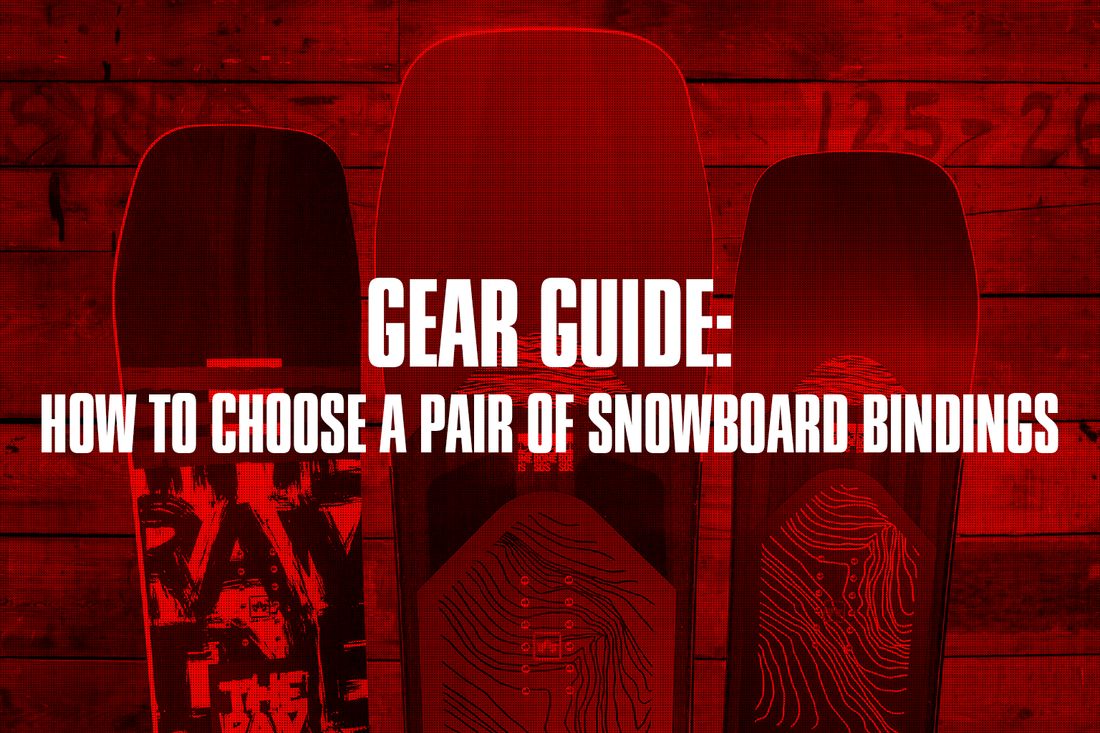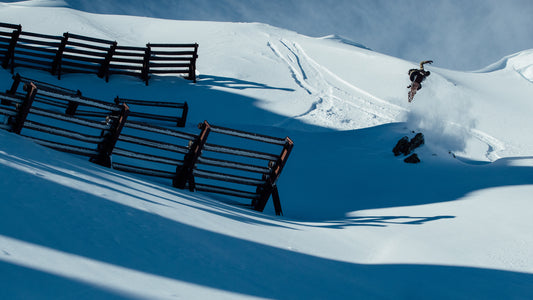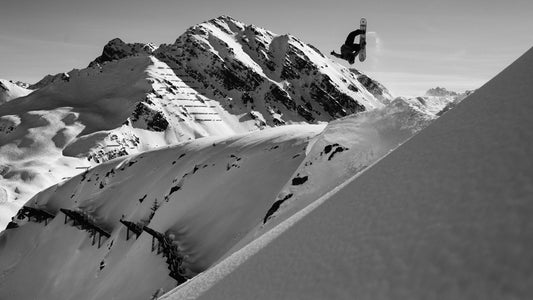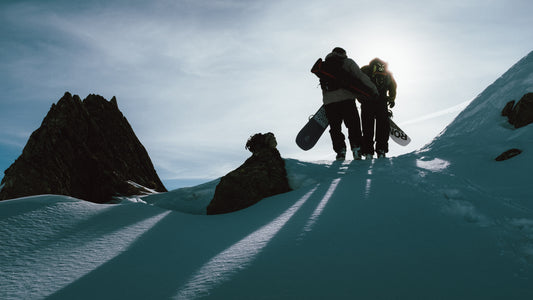Strapping in for the ride
Today’s snowboard bindings are marvels of computer-engineering that combine space age materials with almost infinite adjustability. The right pair, correctly set up for your boots, will improve your ability to manipulate the board and make riding way more comfortable.
So where to start? Where else but right here, with our binding buyer’s guide...
Snowboard Binding Type – Straps vs Step-In vs Rear Entry
Let’s get this clear right off the bat: step-in snowboard bindings suck. We don’t care if the highback folds down or they work with cleats in your boot, the supposed speed increase when it comes to getting ready to drop in can’t compensate for the drawbacks in performance. We’ve yet to try a step-in system that isn’t over-engineered (more stuff to break) loose-feeling and/or generally awkward.
Trust us – if any of these systems worked, we’d make one ourselves.
At Rome we firmly believe that the classic two-strap snowboard binding is the way to go, whatever style of rider you are. It’s a tried and trusted technology that we’ve been perfecting alongside our team for over a decade.
Snowboard Binding Flex
Although it’s not as obvious as the stiffness of your snowboard or your boots, every model of bindings will offer its own level of flex. This is derived from the materials used in the baseplate, highback and straps.
Firmer bindings like the Black Label and the all-new Cleaver offer maximum response, since your energy is transmitted directly into the edges of the board. They achieve this through the use of rigid yet lightweight components (in the Cleaver’s case, both the highback and baseplate are made from carbon-infused nylon) which tends to add to the price.
If you charge big lines, enjoy laying down euro-carves on the groomers or you’re an advanced freestyle rider that needs maximum support on big jumps and in the pipe, you’ll dig the performance you get from this kind of binding.
Softer bindings like the D.O.D, the 390 Boss and the Crux will be more forgiving. If you make a mistake or you slide out on a landing, you’re less likely to eat shit. They also make it easier to tweak your trick if you want to style out some rail or jump tricks.
For this reason park rats, as well as kids and beginners, should look towards a soft snowboard binding as easy-entry wrap bindings.
Finally, if you’re an all-mountain kinda shredder, you will most likely appreciate a mid-flex pair of binders such as the Vice or the best-selling Katana. These offer a nice balance between response and tweakability.
Snowboard Binding Features
Once you’ve got an idea of what level of flex you require and have narrowed down your choice accordingly, it’s time to weigh up the different features.
Baseplate & Heel Cup (Underwrap)
Manufacturers take different approaches to their baseplate and heel cup construction. Some use plastic, others aluminum. At Rome we use different composites that let us fine-tune the flex rating while maintaining strength.
Picking a good baseplate is therefore closely related to your riding style/flex preference. 70% nylon/30% glass is our standard blend, whereas the more aggressive Black Label and the Cleaver switch out the glass for carbon, boosting response.
We also offer two variations on the heel cup design, which we curve right around the side of the binding in a system we call underwrap.
AsymWrap vs. FullWrap

FullWrap – is our classic symmetrical heel hoop. It prioritizes power transfer and balanced support for aggressive all-mountain riding.
AsymWrap – is a pioneering design that’s shorter on one side. This makes for a looser, more skate-like riding experience that enables crazy levels of tweak.
Ankle Straps

Ankle (heel) straps are the crucial anchor point on any binding. They need to be strong, comfortable and secure. We offer three variations:
Proflex – our most high-end ankle strap featuring a geometric material we call AuxTech. This wide, ergonomic design expands evenly, without thinning, for a perfect fit across your boot; it’s also durable and grippy. You’ll find it on the Katana, Cleaver, and Black Label.
Pureflex – another wide strap that spreads the pressure nicely over your foot, but which is lighter and stretchier for maximum tweak. Great for freestyle-oriented models like the 390 Boss and the Crux.
Ultralight – trades a little width for a classic dogbone shape with more padding. A solid all-rounder found on the D.O.D, Vice and Guild.
Toe Straps

Whether you rock ‘em over the corner of your boot or right over the top, flexibility is the name of the game here. Ours come in two options:
Progrip – a durable and expandable design that uses our trademarked AuxTech.
Puregrip – simple and lightweight, for versatile reliability
Ratchet Buckles
On any given day on the hill, you will be constantly cranking and releasing your bindings. As the primary moving part, the ratchets take a lot of this strain. If you get the chance, test the mechanism in store – ideally while in your boots.
Some brands’ ratchets will occasionally slip (toe straps are the usual culprit) or be tough to release (this will only be worse in freezing conditions). Flimsy-feeling springs should be avoided at all costs – the last thing you need on the mountain is a mechanical failure.
At Rome we put the same amount of thought into these small but crucial components and stand behind our buckles for unparalleled ease of use and reliability.
Padding
Flying over ice and crud, heavy landings and simply cranking from edge to edge is hard work on your feet. A good snowboard binding will therefore feature some useful padding in critical areas around the footbed and highback.
Rome’s top-end base plates are fitted with a layer of Duracush underneath; this space age material actually adapts to impact, going from soft and flexible to firm in a split second – kinda like suspension for your bindings.

Snowboard Binding Size
Whatever snowboard bindings you choose, it’s essential that you get the right size. Most manufacturers offer two or three options, but the sizes don’t always correlate between brands so pay close attention to the suggested boot sizes. At Rome, these are:
Small – US Men's 5-7, US Women's 6.5-8.5
Medium/Large – US Men's 7.5-10, US Women's 9-11.5
Large/XL – US Men's 10.5-12.5, US Women's 12-14
Snowboard Binding Fit & Adjustability
When it comes to fit, selecting the right size of binding is just the start. From here, getting them set up for your particular boot and shredding style will greatly improve the overall riding experience.
Most decent bindings on the market will offer tool-free adjustment of the toe strap, ankle strap and forward lean. Play around with these features in store to see how easy they are to operate. If they’re stiff and awkward fresh out of the box, they’ll be worse with cold hands.
Rome’s bindings add even more adjustable features, starting with the baseplate. This can be slid forward and backward relative to the underwrap for a better match with your boot. Likewise the high back can be rotated relative to the edge for more efficient, comfortable turns. Finally, our PivotMount system allows you to make up to 64 micro adjustments to the position of your ankle strap across the boot.
All these customizations are discussed in more depth in our article on How To Fit Your Snowboard Bindings. If you’re new to snowboarding, we’ve also put together a useful explainer on How To Choose Your Snowboard Stance.
Choosing Snowboard Bindings – The Bottom Line
- Just like when you’re choosing a new snowboard the first thing you need to figure out is your riding style and ability level; binding selection all flows from there.
- Stiff bindings suit heavier or more aggressive riders who need maximum response and support. They’ll help you perform explosive turns and go bigger, faster. If this sounds like you, take a look at our Best Freeride Bindings.
- Softer bindings help you to tweak your grabs and are generally easier (and more comfortable) to control at slower speeds, making them better for park riders and the best rear entry snowboard bindings for beginners. Many of these are included in our list of the Best Freestyle Bindings.
- Mid-flexing bindings offer a versatile compromise between the two, which is why they tend to make for the Best All Mountain Bindings.
- Once you’ve narrowed down your choice by flex, compare the different features and try them on with your boot. You’re looking for a pair that seem lightweight, strong, comfortable and reliable. The more you can customize the fit, the more comfortable they will be.
- Finally, forget about gimmicks like step-in and rear entry. One look at the average contest podium or latest video should tell you why.



